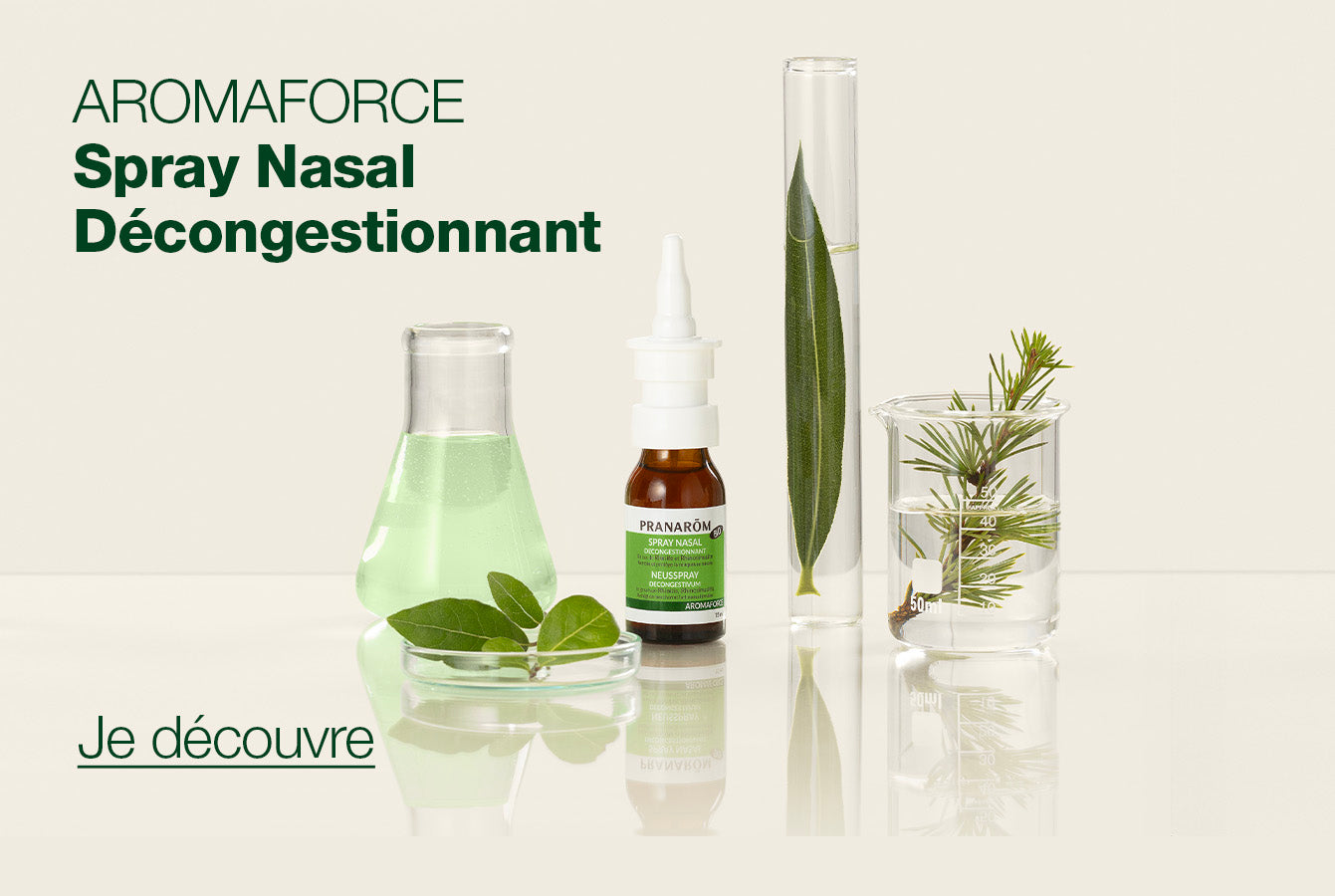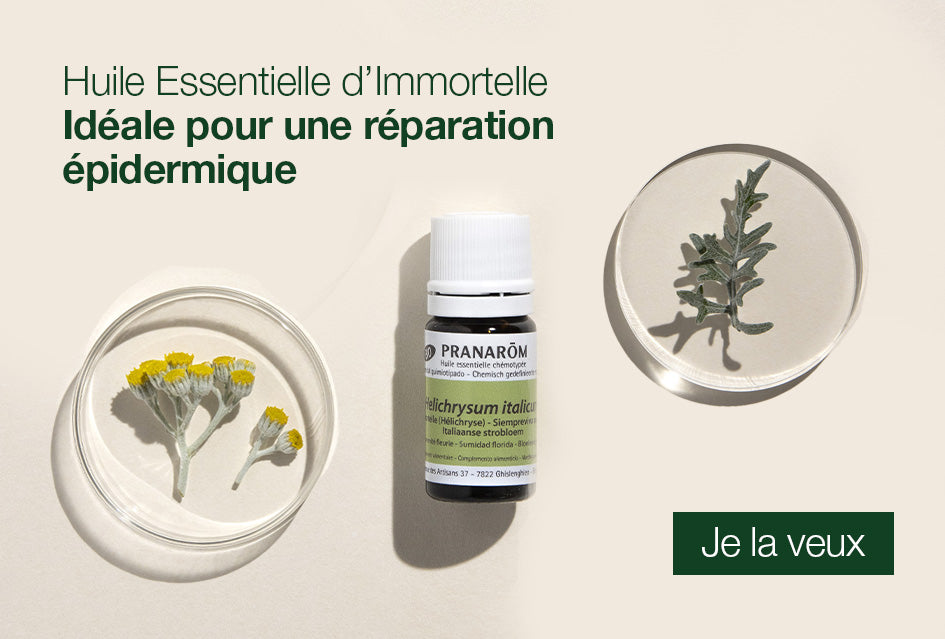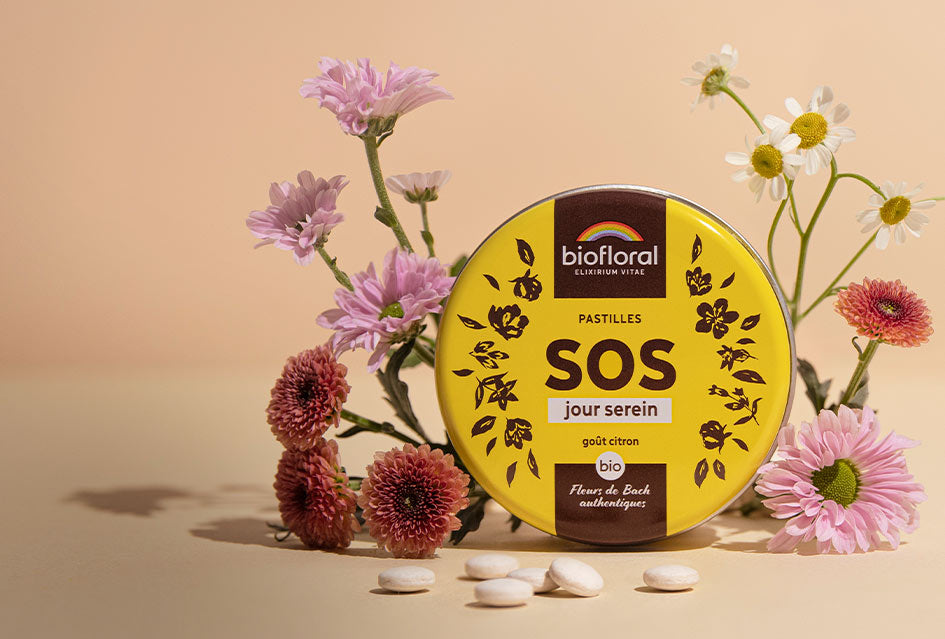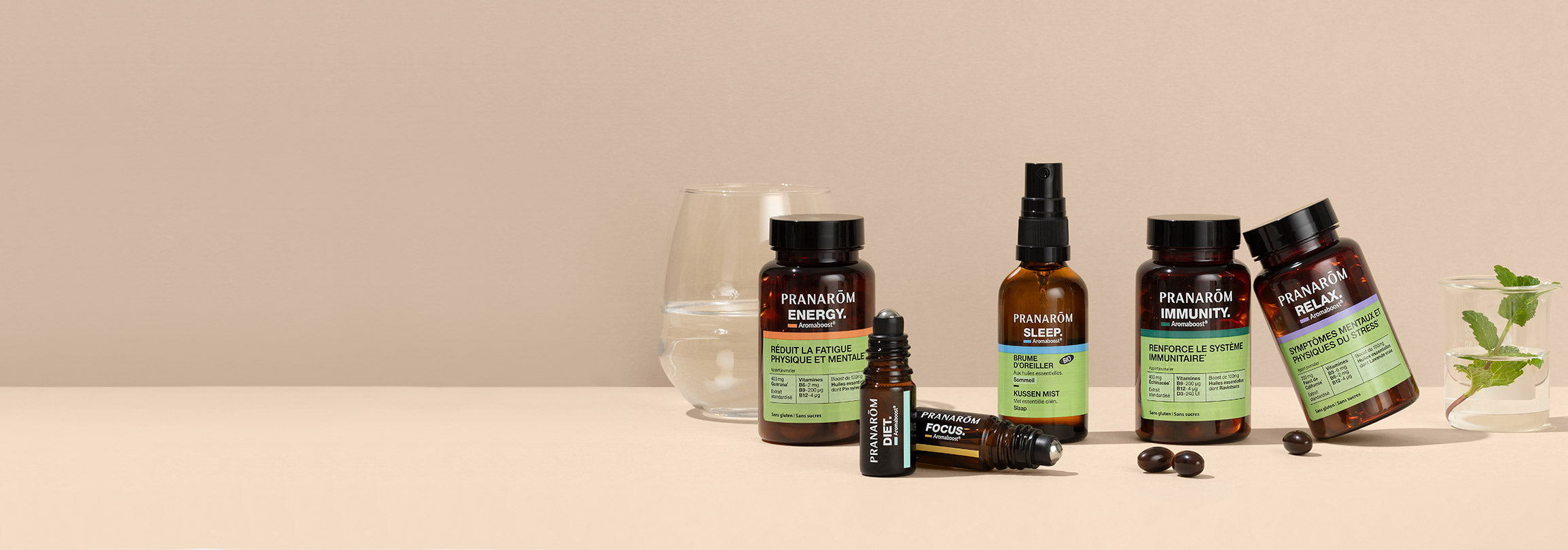Usage tips
Any very active and powerful substance, even natural like an essential oil, can also become toxic if the doses, routes of administration or frequency of intake are not respected. Do not increase the dose without the advice of a healthcare professional and follow the precautionary rules below with each use.
- Allergy test: carry out a test before each use by applying 1 to 2 drops of Essential Oil in the fold of the elbow. Wait 20 minutes to check that no allergic reactions occur;
- Consumption of essential oils for children under 6 years old and pregnant women only under medical advice;
- Special precautions should be taken for epileptics, asthmatics, people with a history of hormone-dependent cancers, hypo-or hyperthyroidism, stomach ulcers, allergies or even taking anticoagulants;
- After massage or skin application, always wash your hands;
- Never inject essential oils intravenously or intramuscularly;
- Use high quality essential oils (100% pure and natural) and reputable brands;
- Do not leave the bottles within the reach of children;
- The nose, ear canal, anogenital areas can never be the subject of application of pure essential oils;
- Never get essential oil into your eyes. Indeed, the eye is an aqueous environment, and essential oils are not soluble in water;
- In case of accidental absorption or skin reaction, ingest or apply a fatty oil to dilute the essential oil (olive, sunflower) then contact the poison control center.
Skin application
Essential Oils easily pass through the skin layers to reach the blood circulation. The cutaneous route in relation to the target organ is a route which combines effectiveness and safety of use. This is therefore the preferred method of application.
Certain essential oils being more irritating, as a precautionary principle we recommend diluting them in a Vegetable Oil . Rich in fatty acids, vegetable oils strengthen the epidermis film and prevent drying of the skin. Well chosen depending on the problem to be treated, vegetable oils will even act in synergy with essential oils.
Always choose virgin and organic vegetable oil.
In practice
- Adult: 3 to 4 drops of Essential Oil, 3 to 4 times a day;
- Children aged 6 to 12: ½ adult dose - 1 to 2 drops, 3 to 4 times a day;
- Children under 6 years old and pregnant women: contact a healthcare professional before use.
Application areas
For an action on the nervous system (stress, anxiety, anxiety, sleep), the 4 points of application are:
- Handles ;
- The sole of the foot;
- Spine ;
- The solar plexus.
Usage precautions
Do not apply photo-sensitizing oils before exposure to the sun or a tanning session (eg: citrus fruits such as lemon, bergamot, sweet orange, grapefruit, etc.). They can cause a skin burn or irreversible browning of the skin. In all cases, sensitive areas, eyes and mucous membranes should be avoided.
Oral/sublingual route
Depositing essential oils on the oral and sublingual mucosa allows you to benefit from the richness of the blood and nervous network for instant and general action .
However, essential oils should never be ingested directly into the mouth.
It is advisable to count the drops by diluting them in a neutral medium such as a teaspoon of vegetable oil or in honey, on a neutral tablet cat), on a piece of cane sugar or even in a little yogurt. In addition to avoiding an overdose of essential oil, this dilution in a neutral medium helps to attenuate the taste.
By this method of administration, essential oils deliver their biochemical, energetic and informational activities in a few seconds.
In practice
- Adult: 1 to 2 drops of Essential Oil, 3 to 4 times a day;
- Child aged 6 to 12: 1 drop, 3 to 4 times a day;
- No oral use in children under 6 years old and pregnant women without medical advice.
The olfactory pathway
Breathe to feel better
Essential Oils being composed of volatile molecules, this method of administration is certainly the first contact with the world of aromatherapy .
Through this route of administration, odors and the messages they contain are sent to the limbic brain, where our emotions and emotional memory reside.
Not all Essential Oils can be diffused and not all are suitable for all types of people present on the premises. It is important to check the best use of each essential oil with your retailer.
There are 4 olfactotherapy techniques:
Hands in cathedral
Using a Roll-on bottle, apply the essential oil or synergy of essential oils to each inner side of the wrists and perform a small wrist-to-wrist massage. Then join your hands in a cathedral shape to cover your nose with your hands together and then take a long, deep breath, repeated 3 times in succession. The application thus described will be renewed at will according to the felt need.
Body heat promotes the volatilization of essential oils on the wrists and the clasped hands allow the air filled with this fragrance to be collected which will finally be inhaled. The fragrances of essential oils will be captured by our olfactory neuroreceptors in order to be identified and compared with neighboring brain areas where memory, emotions and behavior are located.
The Aromastick inhaler
The Aromastick is a pocket inhaler which consists of a cylinder with a rounded end in which houses a stick intended for receiving a few drops of essential oil. Simply bring the nasal tip to your nostril and take a deep breath to benefit from the properties of the selected oil.
Bottle breathing
Place the bottle of essential oil or essential oil synergy 2 cm from the nostrils and breathe without forcing. Close your eyes. Inhale once under the left nostril and once over the right nostril. The use thus described will be renewed at will according to the felt need.
Diffusion
Apart from these three personal olfactotherapy approaches, wet (ultrasonic diffuser) or dry (air pump diffuser) diffusion of essential oils remains the most widespread means of diffusing oils into the atmosphere. A room of 10 to 20m² will receive a diffusion of 4 to 6 drops of essential oils and around ten drops for a living room of 50m². Atmospheric diffusion thus offers the possibility of creating your universe through the play of fragrances.
Precautions
Some essential oils are unsuitable, contraindicated or unpleasant to diffuse. There are some that are irritating to the mucous membranes (e.g. Ceylon cinnamon, oregano, clove, mountain savory, common thyme, wintergreen). Other essential oils are neurotoxic (e.g. hyssop, sage). Finally, the smell of certain essential oils is unsuitable or hardly suitable when diffused alone (eg: basil, coriander, carrot, cypress, cumin, Italian helychryse, chamomile).
- Diffuse for maximum 10-15 minutes/hour;
- Do not diffuse in a child's bedroom in their presence.
Precautions for use
- It is important to always seek the advice of a healthcare professional before increasing doses and to follow precautionary rules with each use.
- Wash your hands after each massage or contact with synergy
- In the event of accidental splash of essential oil into the eye, rinse the eye under cool tap water for 2 minutes then place a compress impregnated with a vegetable oil (olive, hazelnut, apricot kernel, etc.) for about ten minutes. In the event of accidental contact with sensitive mucous membranes (genitals, ear canal, nose), you should act in the same way.
- Respect the recommended number of drops, the frequency of application or intake, as well as the duration of use. The treatment is effective at these doses and increasing them would not bring anything more, except the risk of possible side effects.
- Patients with allergies and ultra-sensitive skin will carry out a tolerance test before using these synergies by applying a few drops to the crease of the elbow. In the event of intolerance, a skin reaction will be visible in around ten minutes and the treatment may therefore not be suitable.
- In case of allergy, intolerance or skin irritation, apply a few drops of marigold vegetable oil (calendula) 3 to 4 times a day for 2 to 3 days.
- If a large volume of essential oil is accidentally ingested, call your local poison control center.
Effects
Listening to your body following any treatment is also a duty. Scientific aromatherapy (P3) is not a panacea and is not necessarily suitable for everyone. Thus, the results can be optimal or disappointing. It is not so much this science that must be doubted in the event of failure but certainly the good understanding of the disease for the best choice of essential oils.
Tolerance and toxicity
Even if the choice of essential oils and their use presents only a minimum of risk and side effects, we cannot say that tolerance will be 100%. In the event of a suspicious reaction, the application should be interrupted. Perhaps your skin is allergic to an aromatic molecule or it is irritated by the causticity of an essential oil or, even, your digestive tract (if ingested) cannot tolerate one or the other. another of these plant quintessences.
Pregnancy
Using essential oils in pregnant or breastfeeding women as well as in young children is entirely possible BUT requires special precautions. The authorized opinion of the therapist is essential!
Conservation of Essential Oils
Very sensitive to ultraviolet rays which modify their biochemical structure, essential oils are stored in glass bottles (brown, green, blue).
Very volatile, they will gradually lose their action if they are not sealed in airtight bottles. Don't forget to close your essential oil bottle after use to preserve its richness in molecules and therefore its effectiveness.
By following these few basic rules, an essential oil can be stored for 5 years or 3 years for essences.











